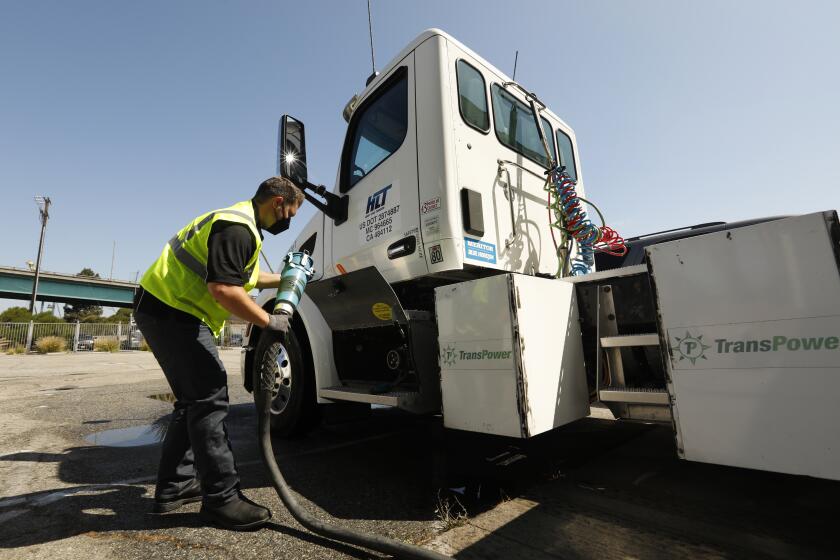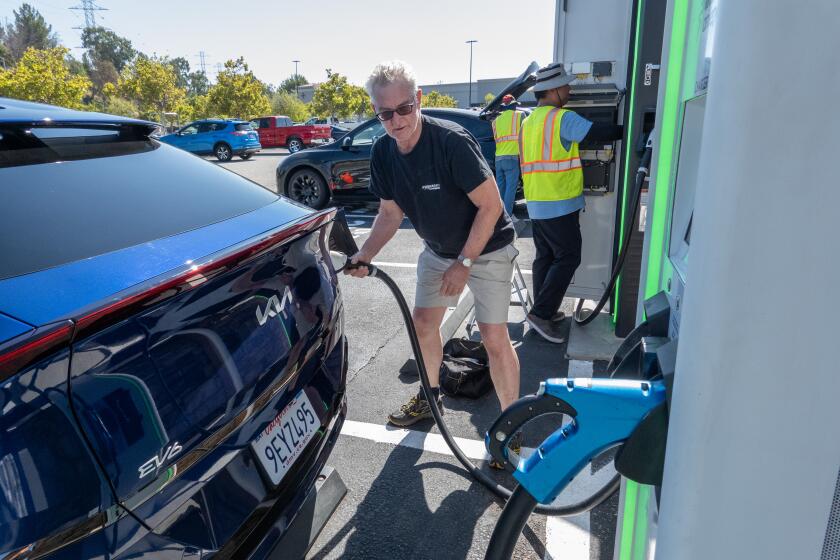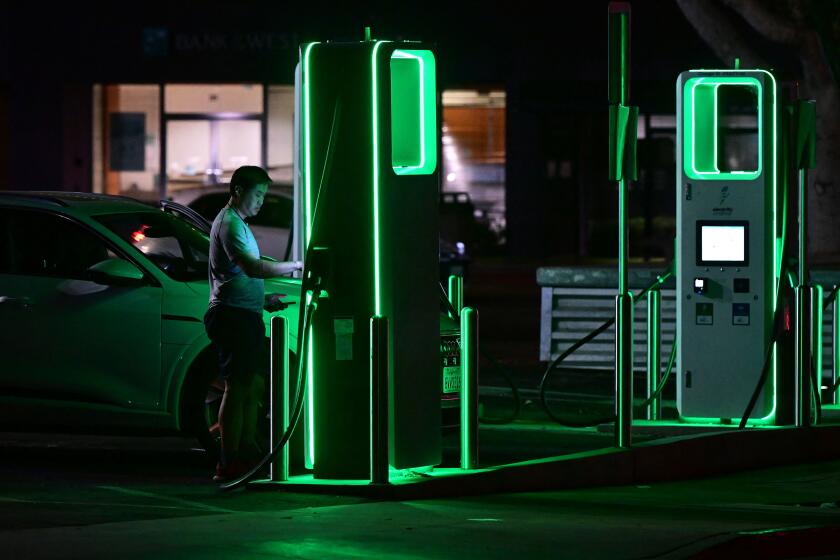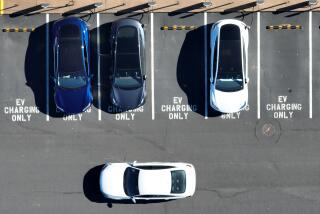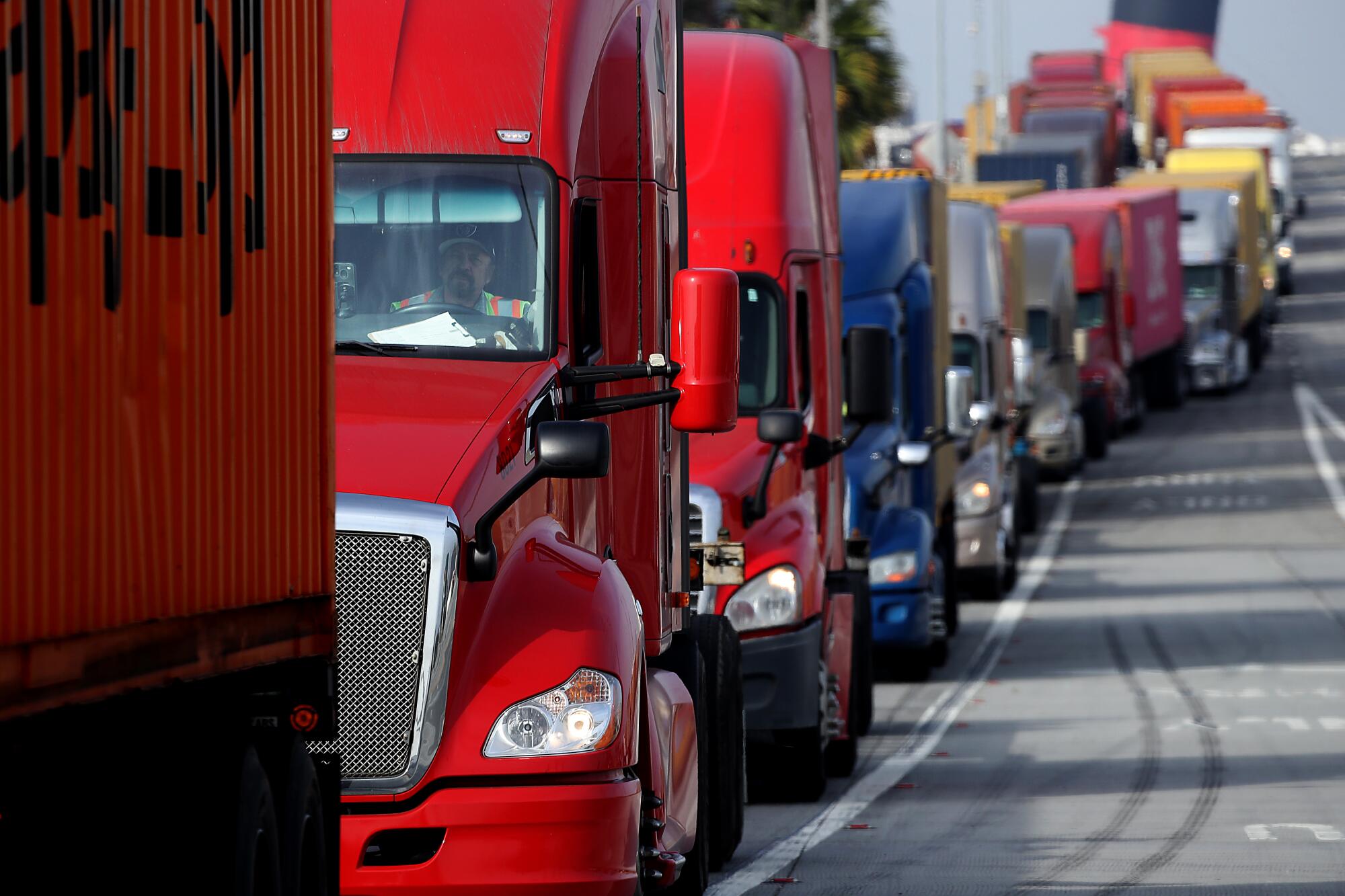
The U.S. Environmental Protection Agency issued tough new emissions standards Friday for heavy-duty trucks and buses, with the aim of cutting air pollution, addressing climate change and boosting economic growth.
The new federal rules will curtail a billion tons of greenhouse gas emissions each year and provide financial benefits worth $13 billion annually “related to public health, climate, and savings for truck owners and operators.” Big rigs, delivery trucks, cement mixers, garbage trucks, transit buses and school buses are all included.
California’s government enacted similar rules last year. The state rules are tougher than the Biden administration’s and are expected to remain so. California’s rules will supersede the federal regulations for large truck fleets operating within the state, whether they are registered in California or not.
Unlike California’s rules, which mandate sales of new electric battery and fuel cell trucks in increasing percentages through 2042, the federal rules allow more flexibility in fuels, as long as air emissions standards are met. Gasoline, diesel, biodiesel, hydrogen and electric-drive trucks would technically all be allowed, but even the EPA acknowledged the rules in effect will require a huge increase in the numbers of electric trucks.
Aggressive and impactful reporting on climate change, the environment, health and science.
Those rules are similar to rules on passenger cars and trucks finalized last week that don’t mandate specific technologies but also will result in a rapid increase in the numbers of electric vehicles manufacturers will be allowed to sell. California’s rules are tougher for new cars and pickups, too, with mandates that increase the percentage sold until they reach 100% by 2035.
A dozen other states plan to follow California’s lead on transportation emissions.
Transportation is a major contributor to greenhouse gas emissions: 29% of all emissions in the U.S., and nearly 50% in California, whose electric power sector is cleaner than the nation as a whole.
It also is a major source of pollution that directly degrades public health, especially near ports and along heavily populated major transportation corridors.
“Exposure to traffic-related pollution is a serious health hazard to those living in communities with heavy truck traffic,” Harold Wimmer, leader of the American Lung Assn., said in a statement Friday. “The mixture of emissions has been linked to poor birth outcomes, reduced lung and cognitive development, development and worsening of chronic respiratory and cardiovascular diseases, and increased risk of dementia, cancer and premature death.”
Wimmer added that the American Lung Assn. estimates that transitioning to zero-emission trucks and electricity could save nearly 67,000 lives by 2050.
The study, sponsored by the freight truck industry, adds to concerns over government mandates. But government officials say the move away from fossil fuels will have economic benefits.
The transition will be expensive. Right now electric big rigs are priced two to three times a diesel truck’s costs — as much as $500,000. A recent trucking industry study concluded that turning to a 100% zero-emission trucking fleet across the U.S. by 2050 would cost more than $1 trillion, including not just the trucks, but thousands of new charging stations and the electrical system’s capacity to power them.
The rules forcing the technological change could lead to far lower costs as manufacturing scales up, proponents say.
“EPA’s new heavy-duty vehicle standards represent a step toward reducing emissions and advancing the transition to zero-emission freight, providing a necessary signal for investment in charging infrastructure and bolstering U.S. manufacturing to meet 2030 climate goals,” said John Boesel, chief executive of CALSTART, a clean transportation advocacy group.
“This regulation will spur investment and innovation that will result in accelerated growth of the domestic zero-emission commercial vehicle industry. In the long term, this regulation will create and protect jobs, while making the air cleaner and healthier for all,” Boesel said.
California has ambitious climate goals, including a pledge to ban the sale of new gasoline- and diesel-powered cars and light trucks by 2035.
Truck manufacturers praised the flexibility of the national rules.
“Ultimately, the successful transition of the commercial vehicle industry is dependent on the availability of reliable zero-emission charging and refueling infrastructure and the ability to conduct business at a reasonable cost of ownership,” said Sean Waters, an executive at Daimler Truck North America. “We appreciate the regulation’s recognition of this fact and look forward to working with the EPA as well as federal and state governments to deliver both.”
Jim Ward, president of the Truckload Carriers Assn., had a similar reaction: “The journey ahead provides for many alternatives to be considered to lower carbon such as blended biodiesel, renewable natural gas, diesel-electric, just to name a few, to help us bridge the gap to the future.”
The industry, however, will contend with the differences between California’s zero-emission mandates and the more flexible federal rules — so plenty of political lobbying and policy controversy lie ahead.
California electric vehicle sales dropped significantly in the last half of 2023, raising questions about the state’s ability to phase out gas-powered cars.
More to Read
Toward a more sustainable California
Get Boiling Point, our newsletter exploring climate change, energy and the environment, and become part of the conversation — and the solution.
You may occasionally receive promotional content from the Los Angeles Times.

